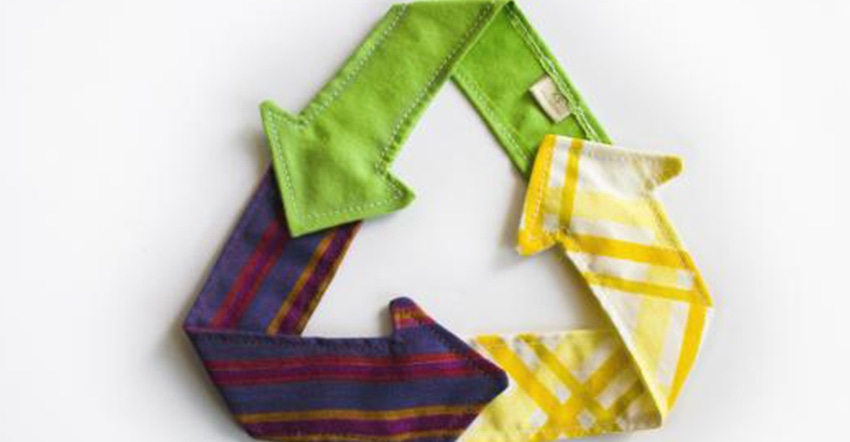Fashion Takes Action Studies Textile Recycling

Fashion Takes Action (FTA) — whose mission is to advance sustainability in the entire fashion system — has released a report entitled, “A Feasibility Study of Textile Recycling in Canada.” The report was commissioned by Environment and Climate Change Canada and aimed to profile the possibilities and pre-feasibility of a local textile recycling industry.
As noted by the report’s authors, “When most people think of plastics, packaging or daily-use articles come to mind…but only a few will connect plastics with textiles. However, seven percent of all plastics in Canadian landfills are textiles, [which] makes textiles the third-largest sub-category of plastic waste in absolute numbers after packaging and automotive.“ Thus, this connection between plastics and textiles is worth exploring, and questions should be asked, such as: why is such a high volume of textile waste ending up in landfills? And, what possibilities currently exist to make economic use of this wasted material?
To better understand textile waste in the Canadian context and its contribution to plastic waste, FTA conducted research from January 2020 to March 2021. The research and report are organized into five parts:
A literature review to introduce and define textiles, describe global fiber consumption and provide an overview of textile sorting and recycling methods
A description of textile waste sources, diversion and collection programs, and the roles of key stakeholders such as consumers, charities, second-hand retailers and graders
A survey and analysis of textile waste from the non-residential sector including fiber and yarn mills, textile and apparel manufacturers, and clothing brands and retailers
A technical review and analysis to evaluates the various sortation and recycling processes' requirements and feasibility (i.e. chemical, mechanical, or hydrothermal) through global market research on existing technologies
Recommendations to best address textile waste in Canada, presented in three categories: process-focus, product-focus and system-focus
One of the report’s most striking findings is that, “when putting all findings together, considering feedstock, investment costs, and technology readiness, the most promising technology to start a textile recycling industry in Canada is mechanical recycling.” And, the best way to get this recycling operation started, note the researchers, is to conduct a pilot with a retailer or manufacturer. “To make this pilot a success, not only the technology, but also potential end markets for the new products must be considered.”
They also identify a need for a platform that “fosters communication among stakeholders and brings them together around shared challenges and opportunities, so that critical information is exchanged and a vision for textile recycling in Canada can be created.”
Additional highlights of the researchers’ recommendations include the importance of:
Making textiles a designated waste material: both the federal government and Canada's provinces must monitor textiles as their own waste type
Communicating the value of textile waste: each province should establish textile diversion programs, and it should be mandatory that municipalities report textile waste data to the province
Encouraging textile waste diversion programs: develop intermediate textile diversion programs for municipalities that are not yet prepared to divert all textiles
Funding textile diversion programs: help to finance the establishment of textile diversion programs at the municipal level (this could include landfill bans).
Fostering a textile recycling industry in Canada: encourage brand owners to keep their material in Canada, and possibly implement an in-store take back program as a form of extended producer responsibility (EPR)
Tracking specific import data on textiles and clothing: currently there are no data available as to the number of textiles imported into Canada
Funding a national textile diversion working group: help to establish a national textile diversion working group that fosters a circular textile economy, with multiple stakeholders across the value chain
Reviewing the Textile Labeling Act: “new material only” regulation must be adjusted so that all provinces may include recycled content
Conducting further research on repair, refurbish, and upcycling: fund further research on the potential for these methods to reduce textile waste to landfill
Encouraging the use of reclaimed fibers: through procurement and tax/duty incentives for products made from recycled fibers
Supporting post-secondary education for circular design: make it mandatory for fashion design programs in Canada to adopt a circular approach to teaching design.
About the Author(s)
You May Also Like




